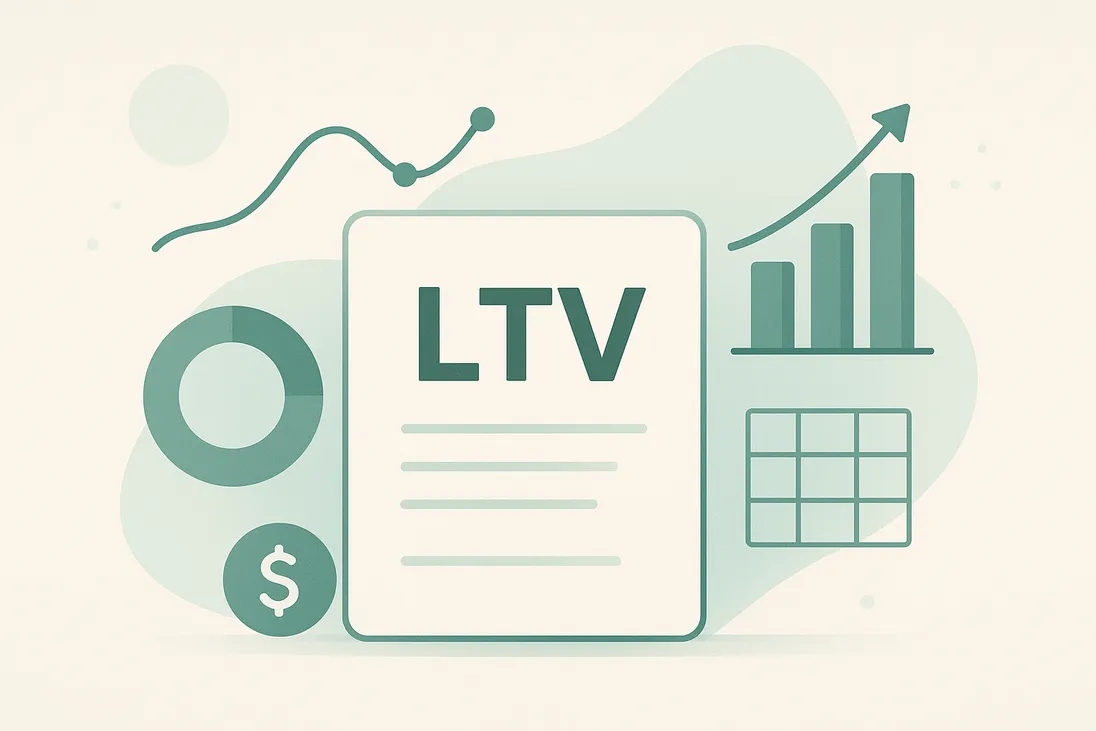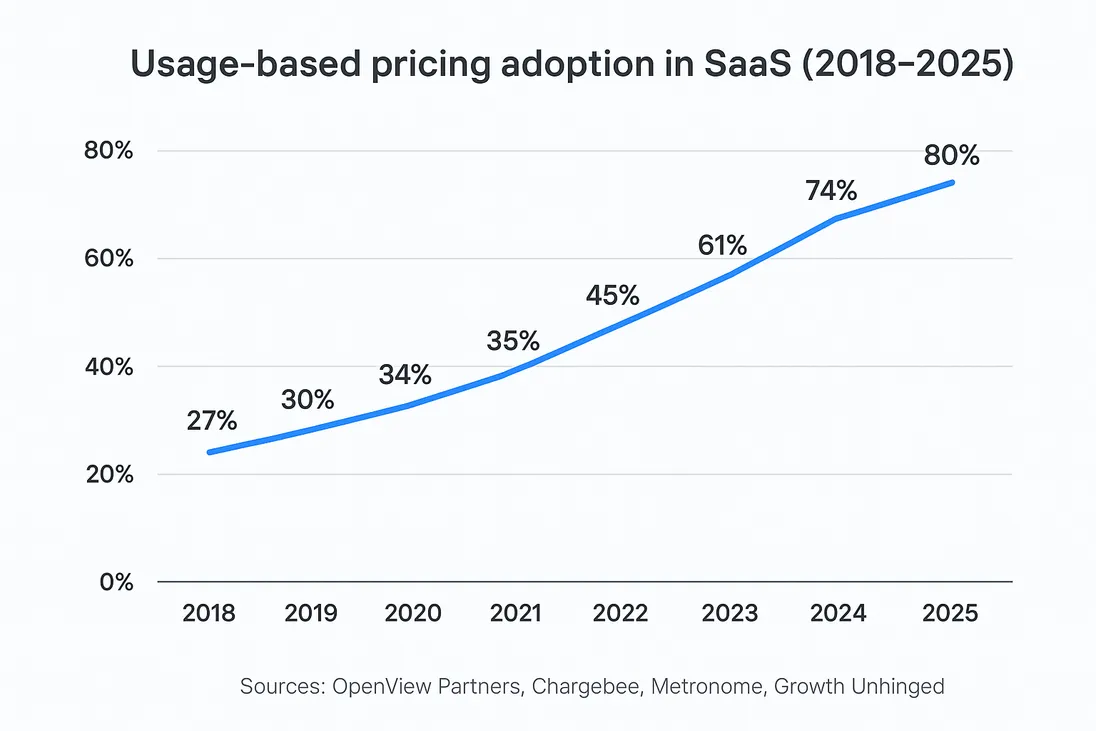How do I calculate the lifetime value of customers in SaaS

Three months ago, I was reviewing the metrics dashboard for a Copenhagen-based SaaS company I considered invested in. Their founder was beaming about their LTV:CAC ratio of 4:1, showing me charts that painted a rosy picture of unit economics. But something felt off. Their burn rate was climbing faster than revenue, and customer acquisition was slowing down despite increased marketing spend.
When I dug deeper into their LTV calculations, I found the problem. They were using the basic textbook formula that treats all customers the same, ignoring the fact that their enterprise customers had completely different behavior patterns than their self-serve users. Their "healthy" metrics were masking a fundamental misunderstanding of their actual customer value.
This isn't uncommon. I've seen dozens of SaaS companies make critical decisions based on LTV calculations that were either oversimplified or just plain wrong. The stakes are high because LTV drives everything from pricing strategy to acquisition spend to product development priorities.
Why most LTV calculations miss the mark
The standard formula you'll find in every SaaS playbook looks clean and simple:
But this formula assumes your business behaves like a perfectly predictable machine where every customer follows the same patterns. In reality, SaaS businesses are messy, and customer behavior varies dramatically based on how they found you, what plan they started with, and dozens of other factors.
Here's what the basic formula gets wrong:
Your churn rates aren't uniform across segments. The startup that signs up for your $29 plan through a Google ad behaves completely differently than the enterprise client that came through your sales team. Mixing them together in a single calculation is like averaging the temperature in a refrigerator and an oven and concluding your kitchen is at room temperature.
Revenue per customer changes over time. Many SaaS companies see expansion revenue that increases ARPU over a customer's lifetime, while others experience contraction. The basic formula assumes revenue stays flat, missing a huge component of actual value.
Gross margins vary by customer type. Enterprise customers might require dedicated success managers or custom integrations that eat into margins, while self-serve customers have nearly 100% gross margins after infrastructure costs.
"I learned early in my investing career that the companies with the most accurate LTV models consistently made better strategic decisions. It's not about having complex spreadsheets - it's about understanding your customers deeply enough to predict their behavior."
The cohort approach that actually works
Instead of relying on averages, I calculate LTV by tracking real customer cohorts over time. This means grouping customers who share meaningful characteristics and following their actual revenue and retention patterns.
Start by segmenting customers based on factors that actually impact their behavior:
Acquisition channel: Customers from different channels often have different expectations and retention patterns. Organic customers typically stick around longer than paid acquisition customers.
Plan level: Customers who start on higher-tier plans usually have different needs and churn rates than those who start small.
Company size: SMB, mid-market, and enterprise customers are essentially different businesses. Treat them as such in your calculations.
Geographic region: If you serve multiple markets, retention patterns often vary by region due to economic conditions, competitive landscape, or cultural factors.
Once you've defined your cohorts, track them month by month for at least 12-18 months. For each cohort, monitor the number of remaining customers, their average revenue, and any expansion or contraction.
Here's what this looks like with real numbers. Let's say you're analyzing 100 enterprise customers who signed up in January:
Month 1: 100 customers at $800 average revenue = $80,000 MRR Month 6: 94 customers at $850 average revenue = $79,900 MRR
Month 12: 89 customers at $920 average revenue = $81,880 MRR Month 18: 85 customers at $980 average revenue = $83,300 MRR
Notice how revenue per customer grew even as some customers churned. This expansion revenue is invisible in basic LTV formulas but represents real value you can capture and optimize for.
To calculate actual LTV, simply add up all the revenue generated by the cohort over time and divide by the original cohort size. In this example, if the total revenue over 18 months was $1.4 million, your LTV would be $14,000 per customer.
Building LTV tracking in practice
The challenge most SaaS companies face isn't understanding the concept - it's actually implementing cohort tracking without drowning in spreadsheets.
In GrowPanel, we automate this entire process. You can define custom cohorts based on any customer attributes, and the platform automatically tracks revenue, retention, and LTV over time. Instead of manual calculations, you get real-time dashboards that update as new data comes in.
The key is setting up your cohorts thoughtfully from the beginning. I recommend starting with 3-4 meaningful segments rather than trying to track everything. You can always add more granularity later as you gather data.
For companies just getting started with cohort analysis, focus on your primary acquisition channels first. If 60% of your customers come through content marketing and 30% through paid ads, create those two cohorts and track them for six months. The insights you gain will be immediate and actionable.
Advanced techniques for mature SaaS companies
Once you have solid cohort data, there are more sophisticated approaches that can improve your LTV accuracy:
Predictive LTV modeling uses early customer behavior to forecast long-term value. If you track usage metrics, feature adoption, or engagement scores in the first 90 days, you can build models that predict 24-month LTV with surprising accuracy.
I worked with a project management SaaS where customers who created their first project template within 14 days had 3x higher LTV than those who didn't. This single behavioral indicator let them predict LTV much earlier than waiting for actual retention data.
Revenue component analysis breaks down LTV into base subscription revenue, expansion revenue, and any professional services. This helps you understand which parts of your business model drive the most long-term value.
One client discovered that expansion revenue represented 45% of total LTV, completely changing their product roadmap priorities. They shifted resources from customer acquisition features to expansion and upselling capabilities.
Risk-adjusted LTV accounts for the distribution of outcomes rather than just averages. Instead of saying "average LTV is $5,000," you might say "70% of customers have LTV between $3,000-$7,000, with 10% churning early and 20% becoming high-value accounts."
This approach is particularly valuable when you're making large acquisition investments or evaluating new customer segments where you have limited data.
Common mistakes that kill LTV accuracy
The biggest mistake I see is treating LTV as a static number. Your customer lifetime value changes as your product evolves, your market matures, and your customer base shifts. Companies that calculated LTV two years ago and never updated it are often making decisions based on outdated assumptions.
Another frequent error is ignoring gross margin variations. If your enterprise customers require dedicated support that costs $200 per month, that needs to be factored into their LTV calculation. I've seen companies overestimate enterprise LTV by 30% or more by assuming the same gross margins across all segments.
Payment failures and involuntary churn also get overlooked. Credit card failures, expired cards, and payment processing issues can reduce your actual LTV by 5-15%. These aren't "real" churn in terms of customer satisfaction, but they absolutely impact your economics.
Seasonal patterns matter too. Many B2B SaaS companies see higher churn in Q4 and Q1 due to budget cycles and year-end planning. If you calculate LTV during a particularly good or bad period, you might get skewed results.
Making LTV actionable for growth
Accurate LTV calculations are just the foundation. The real value comes from using these insights to make better strategic decisions.
Acquisition spend optimization: With reliable LTV by segment, you can set appropriate CAC targets for different channels. If enterprise customers have 5x the LTV of SMB customers, you can afford to spend much more to acquire them.
Product development priorities: Understanding which customer segments drive the most long-term value helps you prioritize features and improvements. If expansion revenue is a major component of LTV, you might focus on usage-based features that naturally lead to upgrades.
Pricing strategy: LTV analysis often reveals opportunities for value-based pricing. If certain customer segments have much higher LTV, there's probably room to increase pricing for new customers in those segments.
Customer success investment: Knowing the true value of different customer types helps you allocate success resources appropriately. High-LTV segments justify more proactive outreach and support.
In GrowPanel, we make this practical by connecting LTV data directly to your other business metrics. You can see how changes in acquisition strategy impact not just customer count, but predicted lifetime value. This helps you optimize for long-term growth rather than just short-term metrics.
The long-term view
Here in the Nordics, we tend to think about business building as a long-term endeavor rather than a quick optimization game. This perspective is particularly valuable when it comes to LTV.
Instead of just calculating and optimizing current LTV, consider what drives sustainable LTV growth over time. Product quality that naturally extends customer relationships. Pricing models that align your success with customer success. Features that become more valuable as customers use them longer.
The best SaaS companies I've worked with don't just track LTV - they actively design their entire business model to increase it sustainably. They think about customer lifetime value not just as a metric to calculate, but as a north star that guides product, pricing, and growth decisions.
Start measuring, start optimizing
If you're not currently tracking LTV by cohort, start simple. Pick your primary customer segments, set up basic tracking, and gather six months of data. You don't need perfect attribution or complex models to get started.
The goal isn't to have the most sophisticated LTV dashboard in your investor updates. It's to understand your customers well enough to make better decisions about where to invest your time and money.
Once you have the basics down, tools like GrowPanel can automate the heavy lifting and give you deeper insights. But the foundation is simply starting to track real customer behavior over time rather than relying on theoretical formulas.
Remember: a roughly accurate LTV based on real customer data beats a precisely wrong calculation based on oversimplified assumptions every single time.

Lasse Schou
Lasse is the founder of GrowPanel and an entrepreneur with 25 years of experience building SaaS businesses. After a successful exit from his previous SaaS company, he now invests as an angel in promising SaaS startups.

